
The University of North Carolina at Greensboro is a public research university in Greensboro, North Carolina. It is part of the University of North Carolina system. UNCG, like all members of the UNC system, is a stand-alone university and awards its own degrees. UNCG is accredited by the Southern Association of Colleges and Schools Commission on Colleges to award baccalaureate, masters, specialist and doctoral degrees. It is classified among "R2: Doctoral Universities – High research activity".

Frank Porter Graham was an American educator and political activist. A professor of history, he was elected President of the University of North Carolina at Chapel Hill in 1930, and he later became the first President of the consolidated University of North Carolina system.

North Carolina Agricultural and Technical State University is a public, historically black research university in Greensboro, North Carolina. It is a constituent institution of the University of North Carolina System. Founded by the North Carolina General Assembly on March 9, 1891, as the Agricultural and Mechanical College for the Colored Race, it is the second college established under the provisions of the Morrill Act of 1890, and the first for people of color in the state of North Carolina. Initially, the college offered instruction in agriculture, English, horticulture, and mathematics. In 1967, the college was designated a Regional University by the North Carolina General Assembly and renamed North Carolina Agricultural and Technical State University.
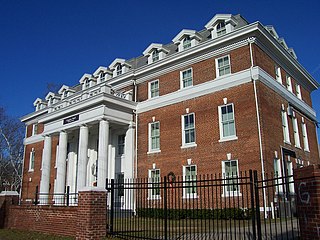
Allen University is a private historically black university in Columbia, South Carolina. It has more than 600 students and still serves a predominantly Black constituency. The campus is listed on the National Register of Historic Places as Allen University Historic District.
The American String Teachers Association (ASTA) is a professional organization for bowed string music teachers based in the United States. It is the largest organization in the U.S. for string teachers. ASTA provides access to fine string playing and teaching and promotes values of community, excellence, teaching and learning, passion, integrity and diversity and inclusion. ASTA serves teachers and students in all areas of stringed instruments from kindergarten to the collegiate level, private teachers, performers, institutions of higher learning and business partners serving all instruments, accessories, sheet music and more for the teachers, students and players of stringed instruments.
The American Association of Physics Teachers (AAPT) was founded in 1930 for the purpose of "dissemination of knowledge of physics, particularly by way of teaching." There are more than 10,000 members that reside in over 30 countries. AAPT publications include two peer-reviewed journals, the American Journal of Physics and The Physics Teacher. The association has two annual National Meetings and has regional sections with their own meetings and organization. The association also offers grants and awards for physics educators, including the Richtmyer Memorial Award, and programs and contests for physics educators and students. It is headquartered at the American Center for Physics in College Park, Maryland.
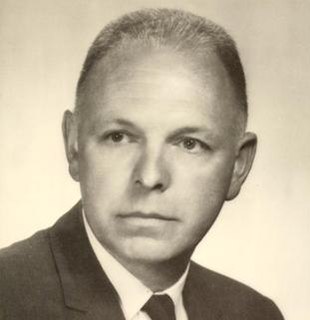
Joseph Carlyle "Lyle" Sitterson was an American educator who served as chancellor of the University of North Carolina at Chapel Hill from February 16, 1966, to January 31, 1972.
The National Association for Music Education (NAfME) is an organization of American music educators dedicated to advancing and preserving music education as part of the core curriculum of schools in the United States. Founded in 1907 as the Music Supervisors National Conference (MSNC), the organization was known from 1934 to 1998 as the Music Educators National Conference. From 1998 to 2011 it was known as "MENC: The National Association for Music Education." On September 1, 2011, the organization changed its acronym from MENC to NAfME. On March 8, 2012, the organization's name legally became National Association for Music Education, using the acronym "NAfME". It has more than 130,000 members, and NAfME's headquarters are located in Reston, Virginia.

The North Carolina High School Athletic Association (NCHSAA) is the governing organization of high school athletics in North Carolina, United States. The association maintains the official rule books and governs the officiating standards across the state.
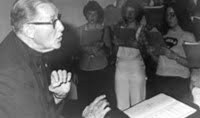
Cletus Madsen was a 20th-century Catholic priest of the Diocese of Davenport in the US state of Iowa. He was involved the Liturgical Movement in the Catholic Church in the mid-20th century.

James Benson Dudley was President of North Carolina Agricultural and Technical State University from 1896 until his death in 1925. James B. Dudley High School in the town of Greensboro, North Carolina, where the Agricultural and Technical University is located, was named after Dudley in recognition of his work for his community.
Cal Lampley, an American composer and record producer, was born in Dunn, NC. He was the second child of Hettie Marina and William Lorenzo Lampley, and had a brother named William Elwood. He graduated with a B.S. from North Carolina Agricultural and Technical State University in Greensboro, North Carolina. His first known music contribution was as an organist of the Chapel Hill Presbyterian Church, which was pastored by Rev. Charles Jones and whose congregation included Frank Porter Graham, President of the University of North Carolina. The church became the first in Chapel Hill to integrate when some members of the Navy B-1 band began attending services and social events there and church-sponsored events at the Forest Theatre. B-1 was composed of the first African Americans to serve in the modern Navy at general rank, and most of its members had NC A and T connections and knew Lampley from Greensboro's lively music scene. Lampley himself served two and a half years in the Army Infantry. Lampley moved to New York City in 1946 to continue his education at the Juilliard School of Music. With an Artist Diploma in 1949 in piano after three years under the direction of piano teacher Irwin Freundlich and composer Richard Franko Goldman, Lampley debuted his performance as a pianist at the Carnegie Hall concert in 1950. He won a job as a tape editor at Columbia Records. During his 9-year stint with Columbia, he rose to the position of Recording Director of the Popular Albums Department. He was later hired by record producer George Avakian, who would later become his assistant, to work as an A&R and as a record producer for music labels such as Columbia, Warner Bros., RCA/Victor, and Prestige. He worked with artists including Miles Davis, Mahalia Jackson, Dave Brubeck, Art Blakey, Leonard Bernstein, Freddie McCoy and Louis Armstrong. Other collaborations were with classical, jazz and pop greats such as Nina Simone, Robert Cassadesus, Zino Francescatti, Guiomar Novaes, Johnny Mathis, Genevieve, Victor Borge, Carmel Quinn, Arthur Godfrey, Tab Hunter, Bill Haley, Lonnie Sattin, and Chico Hamilton. His own version of the composition "Misty" by jazz musician Richard "Groove" Holmes was Prestige's Records biggest single in its entire history; it peaked at number 44 on the Billboard charts in 1966. In tribute to his musical contribution to the city and the state, Mayor Kurt L. Schmoke officially promulgated the "Cal Lampley Day" on May 1, 1994 in Baltimore at a City Hall ceremony. On July 6, 2006 Lampley died at the Baltimore Washington Medical Center in Baltimore from complications of multiple sclerosis.
The North Carolina Association of Educators (NCAE) is a professional association for public school employees formed in 1970 by the merger of the North Carolina Education Association with the North Carolina Teachers Association. Since North Carolina prohibits collective bargaining by public employees, the NCAE works as a professional development and advocacy organization. It is affiliated with the National Education Association. The organization has nearly 60,000 members.
The history of North Carolina Agricultural and Technical State University, the first land grant college for people of color in the state of North Carolina, can be traced back to 1890, when the United States Congress enacted the Second Morrill Act which mandated that states provide separate colleges for the colored race. The "Agricultural and Mechanical College for the Colored Race" was established On March 9, 1891 by an act of the General Assembly of North Carolina and began in Raleigh, North Carolina as an annex to Shaw University. The college made a permanent home in Greensboro with the help of monetary and land donation by local citizens. The college granted admission to both men and women from 1893 to 1901, when the Board of Trustees voted to restrict admission to males only. This policy would remain until 1928, when female students were once again allowed to be admitted.
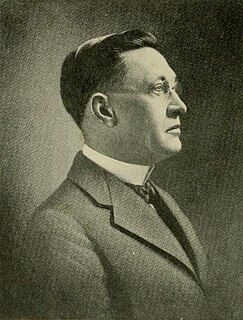
Julius Isaac Foust (1865–1946) was the second president of the school now known as The University of North Carolina at Greensboro, serving from 1906 until his retirement in 1934.

Willa Beatrice Player was an American educator, college administrator, college president, civil rights activist, and federal appointee. Player was the first African-American woman to become president of a four-year fully accredited liberal arts college when she took the position at Bennett College for Women in Greensboro, North Carolina.
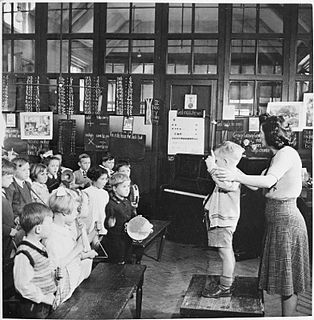
Women in music education describes the role of women musicians, conductors, teachers and educational administrators in music education at the elementary school and secondary education levels. While music critics argued in the 1880s that "...women lacked the innate creativity to compose good music" due to "biological predisposition", later, it was accepted that women would have a role in music education, and they became involved in this field "...to such a degree that women dominated music education during the later half of the 19th century and well into the 20th century." "Traditional accounts of the history of music education [in the US] have often neglected the contributions of women, because these texts have emphasized bands and the top leaders in hierarchical music organizations." When looking beyond these bandleaders and top leaders, women had many music education roles in the "...home, community, churches, public schools, and teacher-training institutions" and "...as writers, patrons, and through their volunteer work in organizations."

Jan Van Dyke was an American dancer, choreographer, dance educator and scholar who was a pioneer of modern and contemporary dance.
Joseph Samuel Clark was an African-American academic administrator who spent most of his career in Louisiana. He was the head of Baton Rouge College and president of Southern University and A&M College, both historically black colleges, where he served in total from 1901 to 1938. During the years from 1914 to 1938 he led the development of Southern, designated as a land grant college in 1890 and moved to the Baton Rouge area in 1914.
Etta Christine Leath Gravely is an associate professor of chemistry education at North Carolina A&T State University in Greensboro, North Carolina.











